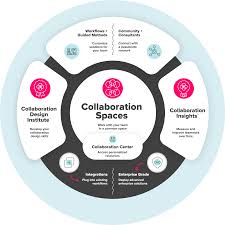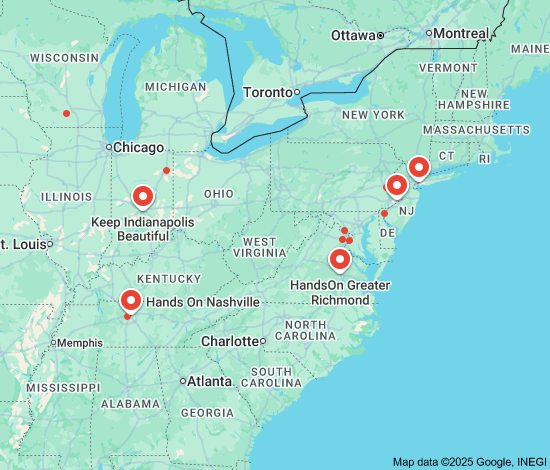The Importance of a Wellness Program for Staff
Employee wellness is a crucial aspect of maintaining a healthy and productive workforce. Implementing a wellness program for staff can have numerous benefits, both for the employees and the organization as a whole.
Benefits of a Wellness Program
- Improved physical health: Encouraging staff to participate in wellness activities such as exercise programs or health screenings can lead to better overall physical health.
- Reduced stress: Providing resources for stress management and mental health support can help employees cope with work-related stress more effectively.
- Increased productivity: Healthy and happy employees are more likely to be productive and engaged in their work, leading to improved performance.
- Enhanced morale: Showing that the organization cares about the well-being of its staff can boost morale and create a positive work environment.
- Lower healthcare costs: By promoting preventive care and healthy lifestyle choices, wellness programs can help reduce healthcare expenses for both employees and the company.
Components of a Wellness Program
A comprehensive wellness program may include:
- Health screenings
- Fitness challenges or classes
- Nutritional counseling
- Mental health resources
- Work-life balance initiatives
- Incentives for participation
How to Implement a Wellness Program
To successfully implement a wellness program for staff, organizations should:
- Educate employees about the benefits of wellness activities.
- Create a supportive environment that encourages participation.
> li > Provide resources and incentives to motivate staff to engage in wellness initiatives.
li > Evaluate the effectiveness of the program regularly and make adjustments as needed.
<
h2 > Conclusion <
/h2 >
<
p > Investing in employee wellness is an investment in the success and sustainability of your organization. By prioritizing the well-being of your staff through a comprehensive wellness program, you can create a healthier, happier, and more productive workforce. /p >
<
/body >
<
/html >
Top 8 FAQs About Employee Wellness Programs: Understanding, Creating, and Engaging
- What is the employee wellbeing program?
- What are the 5 pillars of employee wellbeing?
- How to create a wellness program at work?
- What should be included in an employee wellness program?
- What are wellness programs for employees?
- How do you engage employees in a wellness program?
- What are some good wellness activities?
- What are 4 goals for an employee wellness program?
What is the employee wellbeing program?
An employee wellbeing program is a structured initiative implemented by organizations to promote the physical, mental, and emotional health of their staff members. This program typically includes a variety of resources and activities aimed at improving overall employee wellness, such as health screenings, fitness challenges, mental health support, nutritional counseling, and work-life balance initiatives. The primary goal of an employee wellbeing program is to create a supportive environment that prioritizes the well-being of employees and helps them lead healthier and more fulfilling lives both inside and outside of the workplace.
What are the 5 pillars of employee wellbeing?
The five pillars of employee wellbeing encompass various aspects that are essential for promoting a holistic approach to wellness in the workplace. These pillars typically include physical health, mental health, social connections, financial stability, and purpose or meaning in work. By addressing each of these pillars through a comprehensive wellness program, organizations can support their employees in achieving a balanced and fulfilling life both at work and outside of work. Prioritizing these pillars can lead to increased employee engagement, improved job satisfaction, and overall better performance in the workplace.
How to create a wellness program at work?
Creating a wellness program at work involves several key steps to ensure its success. First, it is essential to assess the needs and interests of employees through surveys or focus groups to understand what wellness initiatives would be most beneficial. Next, design a program that includes a variety of activities such as fitness challenges, health screenings, mental health resources, and nutritional counseling to address different aspects of well-being. Establish clear goals and objectives for the program, and communicate them effectively to employees to encourage participation. Provide incentives for staff engagement and regularly evaluate the program’s effectiveness to make adjustments as needed. By following these steps, organizations can create a comprehensive wellness program that promotes the health and well-being of their staff.
What should be included in an employee wellness program?
When designing an employee wellness program, it is essential to include a variety of components to address the holistic well-being of staff members. Key elements that should be considered for inclusion in an employee wellness program are health screenings to assess overall health status, fitness challenges or classes to promote physical activity, nutritional counseling to support healthy eating habits, mental health resources for stress management and emotional well-being, work-life balance initiatives to help employees maintain a healthy equilibrium between work and personal life, and incentives for participation to encourage engagement and motivation. By incorporating these components into an employee wellness program, organizations can create a comprehensive approach to promoting the health and wellness of their workforce.
What are wellness programs for employees?
Wellness programs for employees are initiatives designed to promote and support the overall well-being of staff members within an organization. These programs typically encompass a range of activities and resources aimed at improving employees’ physical, mental, and emotional health. Wellness programs may include offerings such as health screenings, fitness challenges, nutritional counseling, stress management resources, and work-life balance initiatives. By providing these wellness opportunities, organizations demonstrate their commitment to fostering a healthy and positive work environment while encouraging employees to prioritize their health and well-being.
How do you engage employees in a wellness program?
Engaging employees in a wellness program is essential for its success. To effectively involve staff in a wellness program, organizations can utilize various strategies. Communication plays a vital role, so clearly outlining the benefits of the program and how participation can positively impact their well-being is crucial. Providing diverse wellness activities that cater to different interests and preferences can also help engage employees. Incentives such as rewards, recognition, or friendly competitions can motivate participation. Creating a supportive and inclusive environment where employees feel encouraged and supported in their wellness journey is key to engaging them effectively in the program. Regular feedback and involvement of employees in planning and decision-making processes can further enhance engagement and ensure that the wellness program meets their needs and interests.
What are some good wellness activities?
When considering wellness activities for staff, there are numerous options to promote physical, mental, and emotional well-being. Some good wellness activities include yoga classes to improve flexibility and reduce stress, walking or hiking groups to encourage physical activity and outdoor time, mindfulness meditation sessions for relaxation and mental clarity, healthy cooking workshops to promote nutritious eating habits, and team-building exercises to foster camaraderie and communication among staff members. These activities can contribute to a holistic approach to wellness and help employees lead healthier and more balanced lives.
What are 4 goals for an employee wellness program?
A well-designed employee wellness program typically aims to achieve four main goals. Firstly, it focuses on improving the overall physical health of employees through activities such as fitness challenges, health screenings, and nutritional counseling. Secondly, it aims to enhance mental well-being by providing resources for stress management and promoting mental health awareness. Thirdly, an effective wellness program seeks to boost employee morale and job satisfaction by creating a supportive and positive work environment. Lastly, the program aims to increase productivity and reduce healthcare costs by encouraging healthy lifestyle choices and preventive care among staff members. By addressing these four key goals, an employee wellness program can contribute significantly to the overall well-being and success of both employees and the organization.




Leave a Reply